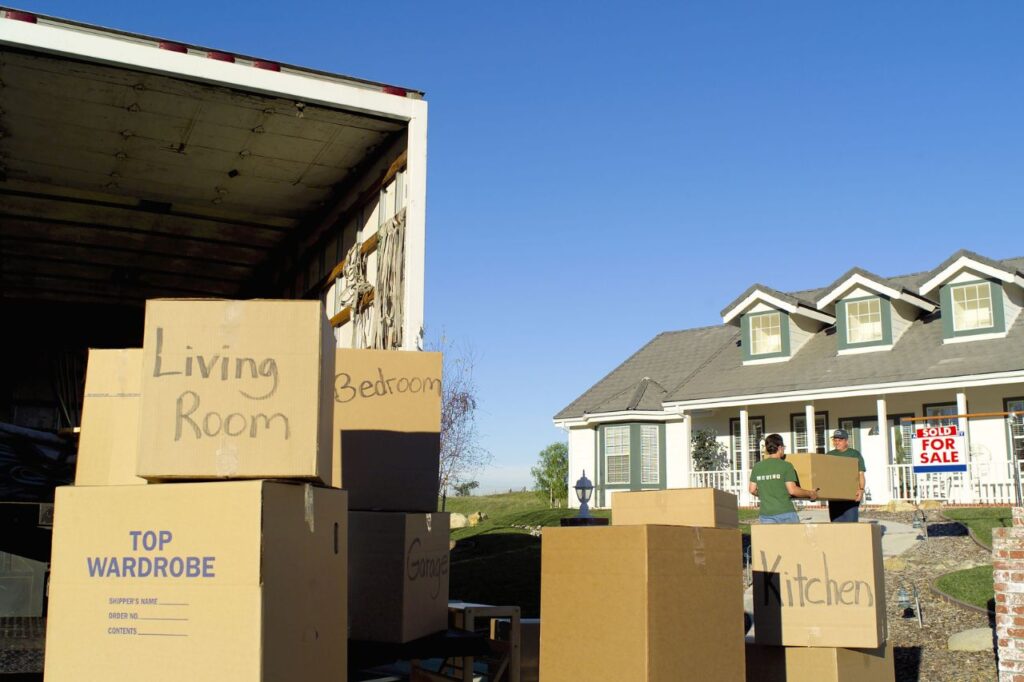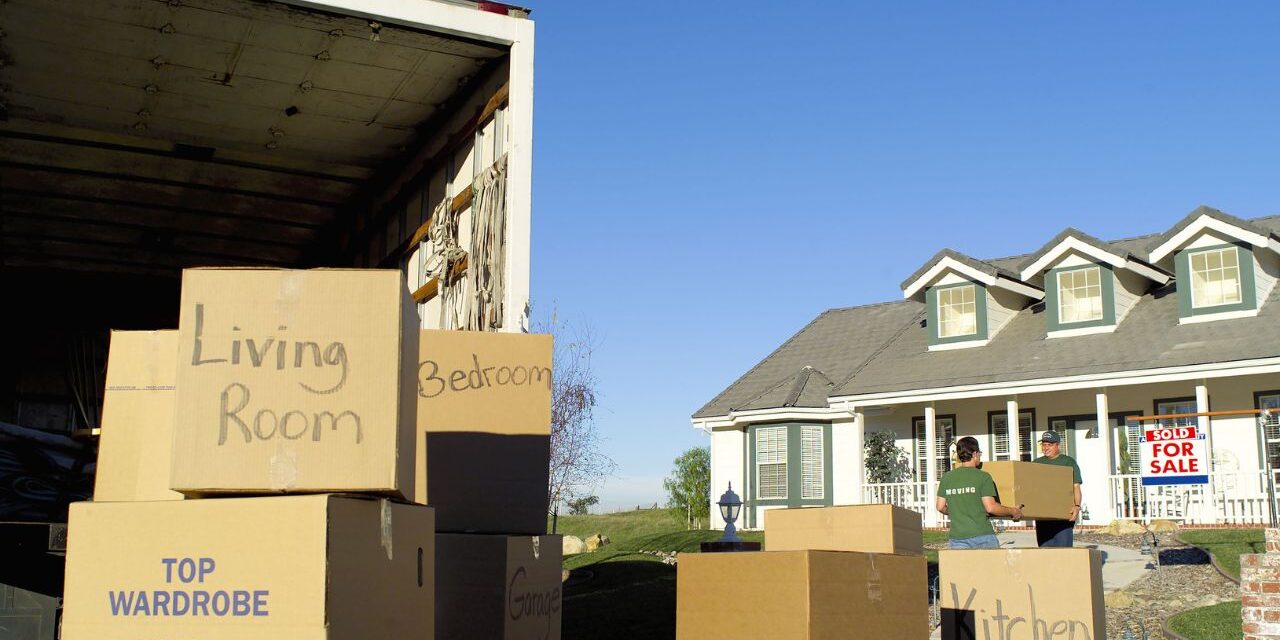Moving across the street or across the country can be stressful, but it doesn’t have to be. You’ll soon be unwinding in your new home if you learn how to pack boxes for moving.

Moving is one of those difficulties that practically everyone must endure, much like getting a tooth extracted or traveling a great distance through a dull environment. Even while it’s occasionally uncomfortable and never quite enjoyable, it typically has a favorable consequence. Obviously, planning ahead and avoiding common moving mistakes are essential to the success of any undertaking, but this is especially true with relocating.
Moving Advice, Techniques, and Tips
1. Remove everything
It might be exhausting to pack up all of your belongings into boxes, bags, and other containers. By reducing clutter as much as you can, you can make life a little bit easier for yourself. Do a ruthless cleanse of useless objects before you pack a single box. You’ll start life in your new space with a clean slate and have less to pack, move, and unpack.
2. Create a relocation folder
Begin gathering new addresses, documents related to rentals or purchases, contracts related to moves, and more in a single folder. (Consider making a paper copy instead of a digital one in case your phone or computer batteries die while you’re moving.) You’ll have the solution (as well as the documentation of contracts, payments, and more) available in case any questions arise during the planning stage or the actual relocation.
3. Be as prepared as you can when packing
Ideally, you will be aware of a move weeks or even months in advance (even if you are unsure of the final destination). Pack the goods you won’t miss and off-season clothing first. Winter jackets can be packed in advance if you’re relocating in the summer, as may probably books and other sporadic goods. Many objects will already be prepared to move when the time comes, reducing your worry.
4. Reserve early
Make reservations in advance if you plan to employ moving services, rent items, or hire contractors to work on your home, such as painters or cleaners. If it’s prime moving season, waiting could result in spending more or not being able to find a truck or movers at all.
5. Plan utilities for your new residence.
Once the dates are set, get in touch with your utility companies to arrange for service at your new residence. When you finally get there after a long journey, you don’t want to discover that the heat, water, or electricity isn’t working. Make a reservation in advance, and document your requests in your moving folder. Request service interruptions on the day you plan to vacate your existing residence at the same time.
6. Always have the necessities on hand
A change of clothes, a toothbrush, a must-have toy or stuffed animal for the kids, medications, papers, etc., should all be packed into a suitcase or bag that will be carried by you in the car, truck, or airplane the night before the transfer. At least you will have some necessities with you if a disaster occurs and the moving truck is lost.
7. Purchase equipment
Several days prior to the major relocation, stock up on supplies. The last thing you want to do is having to stop to the shop in the middle of packing up your belongings or making sure the house is empty. Box cutters, adhesive bandages, permanent markers, packing tape, paper towels, and rubbish bags can be ordered or bought. (Even if not all of them are utilized during the move, they will be afterwards.)
Consider renting moving gear from a moving company if you need heavier moving equipment. (If you use a moving company, they probably have one of their own.) You could be better off buying these products if you relocate regularly. Make sure you have a furniture dolly, furniture pads or covers, and tie-down straps or rope available for the relocation, whether you buy them, hire them, or borrow them.
8. Purchase a vehicle with a loading ramp.
A truck with a ramp is an absolute must for do-it-yourself movers. The difficulty (and struggle) of lifting every box and piece of furniture high enough to fit it into the truck can add hours—as well as aching muscles—to your move, even though renting a truck without one may be less expensive.
Moving Packing Advice
1. Use boxes of the proper size.
Pack books and other heavy goods for moving in tiny boxes; lighter items, such as linens and pillows, can go in larger ones. (Professional movers frequently grumble about large boxes filled with hefty objects. They not only complicate the task but also increase the likelihood of failure.)
2. Pack boxes with heavier stuff at the bottom and lighter items on top.
For balance, pack your heaviest boxes first and in the front of the vehicle if you’re loading it alone.
3. Fill all available space in the boxes.
With clothing, towels, or packing paper, fill in any holes. Boxes that seem sloppy or off balance will frequently not be moved by movers.
4. Refrain from placing goods from several rooms in the same box.
It will expedite packing and make unpacking much simpler as well.
5. Write a description of the contents and the room that each box is intended for on the label.
This will make it easier for you and your movers to locate every box at your new home. It’s a good idea to label each box with a number and keep an inventory list in a tiny notebook to keep track of everything you’ve packed and make sure you have everything when you unpack.
6. Securely tape your moving boxes
Close the bottom and top seams with a few pieces of tape before applying one of the moving professionals‘ tricks and making a few wraps all the way around the box’s top and bottom edges, which are particularly vulnerable.
7. Inquire with your mover about special crating if you’re relocating costly paintings.
To protect your artwork during a move, be sure to pack it correctly. Regular paper should never be used to wrap oil paintings because it will stick. Make an X with masking tape over the glass when packing photos for relocation to strengthen it and keep it intact if it breaks. The images should then be wrapped in cardboard between each framed piece for safety and placed in a frame box with paper or bubble wrap.
8. Be extra careful when packing the kitchen before moving.
There are many various kinds of items that go into packing the kitchen. Find out how to pack dishes before moving: Wrap each dish in packing paper before grouping five or six dishes together. Never pack dishes flat; always on their sides. Additionally, put a lot of paper that has been crumpled up below and above. Paper can be used as a divider between cups and bowls when bundling three or four of them together. Place everything within dish barrel boxes.
Use a box with cardboard dividers to assist preserve the glasses while packing them for a move, and wrap them in numerous layers of paper to further protect them.
9. Organize your clothing
Folded clothing can be placed in cardboard boxes, bags, or even left in the dresser (as long as doing so won’t make the dresser too heavy to transport!) when packing for a move. Use a dedicated wardrobe box so you may hang your things inside of it for hanging. In addition, you won’t have to stress about how to pack your hangers for relocating!
When packing shoes for a move, you need to safeguard them from one another. Wrap each pair of shoes separately to prevent damage from buckles or sharp heels, as well as to prevent dirt from one pair of shoes from contaminating the rest of your footwear. To assist shoes maintain their shape, you can stuff socks inside of them.
You may repurpose some items to make packing jewelry easier. For example, to prevent necklaces from becoming tangled, string them through straws or toilet paper rolls.
10. Acquire moving TV packing tips.
Some movers wrap TVs in quilted furniture pads and move them just like any other piece of furniture. However, if you don’t have the original box, you must transport plasma TVs in special wooden crates because they can break if you put them flat. If you’re doing your own packing, double-box your TV by placing it inside of another box that has been padded with packing paper.






